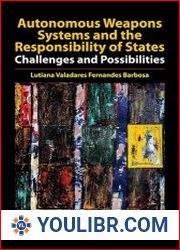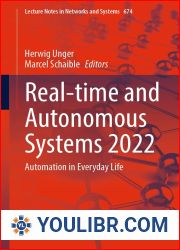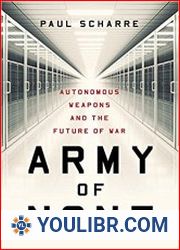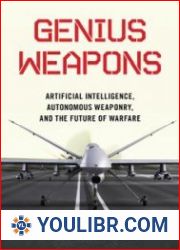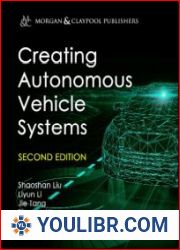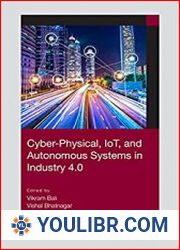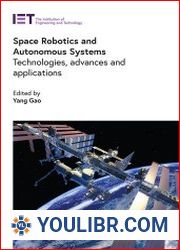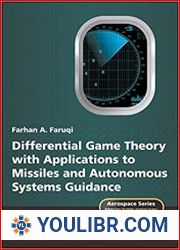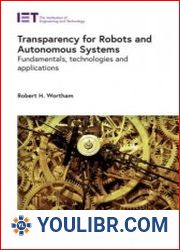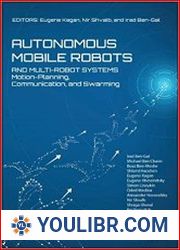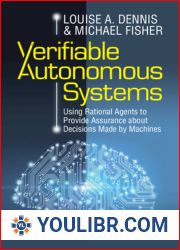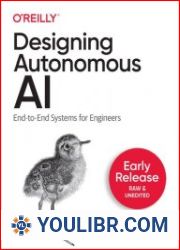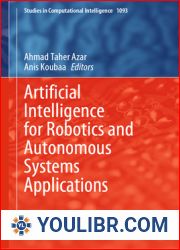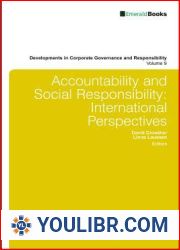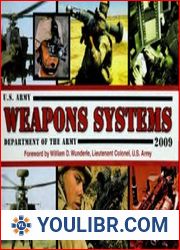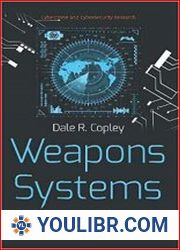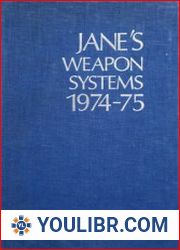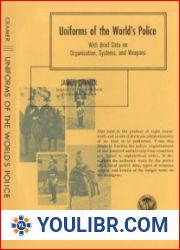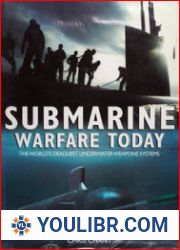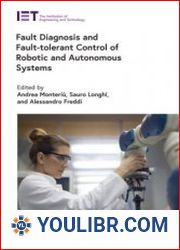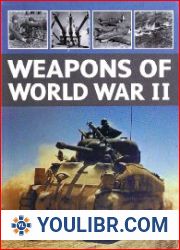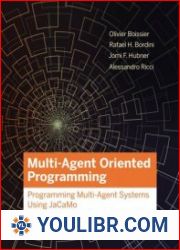
BOOKS - Autonomous Weapons Systems and the Responsibility of States Challenges and Po...

Autonomous Weapons Systems and the Responsibility of States Challenges and Possibilities
Author: Lutiana Valadares Fernandes Barbosa
Year: 2025
Format: PDF
File size: 10.1 MB
Language: ENG

Year: 2025
Format: PDF
File size: 10.1 MB
Language: ENG

Autonomous Weapons Systems and the Responsibility of States: Challenges and Possibilities In the contemporary landscape of armed conflict, there is a profound transformation taking place, marked by the escalating integration of Artificial Intelligence (AI) and Autonomous Weapons Systems (AWS) into military arsenals. This book reviews whether the existing framework in place can effectively address breaches in the context of AWS, and endeavors to map out the main gaps and possible approaches to address them. Part I sets the ground by providing a concept of AWS, followed by a discussion on the accountability gap that AWS generate, showing how the international community has put far more emphasis on individual responsibility rather than state responsibility. Part II analyzes the challenges that AWS pose to the regime governing state responsibility under international law, as codified in the Draft Articles on State Responsibility (ARSIWA), Slijper, Beck, and Kayser affirm that "Lethal autonomous weapon systems are weapons that can select and attack individual targets without meaningful human control. " This development would have an enormous effect on the way war is conducted, and has been called the third revolution in warfare after gunpowder and the atomic bomb. Most definitions converge that AWS can select and engage targets without human intervention, gather and analyze information, and use force autonomously.
Автономные системы вооружений и ответственность государств: вызовы и возможности В современном ландшафте вооруженных конфликтов происходит глубокая трансформация, отмеченная растущей интеграцией искусственного интеллекта (ИИ) и автономных систем вооружения (АРМ) в военные арсеналы. В этой книге рассматривается, может ли существующая структура эффективно устранять нарушения в контексте AWS, и предпринимаются попытки наметить основные пробелы и возможные подходы к их устранению. Часть I закладывает основу, предоставляя концепцию AWS, после чего следует обсуждение разрыва в подотчетности, который AWS создает, показывая, как международное сообщество уделяет гораздо больше внимания индивидуальной ответственности, а не ответственности государства. В части II анализируются проблемы, которые AWS ставит перед режимом, регулирующим ответственность государств в соответствии с международным правом, кодифицированным в проекте статей об ответственности государств (ARSIWA), Слипер, Бек и Кайсер утверждают, что "летальные автономные системы вооружений - это оружие, которое может выбирать и атаковать отдельные цели без значимого контроля со стороны человека. "Это развитие оказало бы огромное влияние на то, как ведется война, и было названо третьей революцией в войне после пороха и атомной бомбы. Большинство определений сходятся в том, что AWS может выбирать и поражать цели без участия человека, собирать и анализировать информацию и использовать силу автономно.
Systèmes d'armes autonomes et responsabilité des États : défis et opportunités Dans le paysage actuel des conflits armés, il y a une profonde transformation marquée par l'intégration croissante de l'intelligence artificielle (IA) et des systèmes d'armes autonomes (ARM) dans les arsenaux militaires. Ce livre examine si la structure actuelle peut efficacement remédier aux irrégularités dans le contexte de l'AWS et tente de cerner les principales lacunes et les approches possibles pour y remédier. La première partie pose les bases de la conception de l'AWS, suivie d'une discussion sur l'écart de responsabilité que l'AWS crée, montrant comment la communauté internationale accorde beaucoup plus d'importance à la responsabilité individuelle qu'à la responsabilité de l'État. La deuxième partie analyse les problèmes que l'AWS pose au régime régissant la responsabilité des États en vertu du droit international codifié dans le projet d'articles sur la responsabilité des États (ARSIWA), Sliper, Beck et Kayser affirment que "les systèmes d'armes autonomes létales sont des armes qui peuvent choisir et attaquer des cibles individuelles sans contrôle humain significatif. "Ce développement aurait un impact considérable sur la façon dont la guerre est menée et a été appelé la troisième révolution de la guerre après la poudre et la bombe atomique. La plupart des définitions s'accordent sur le fait qu'AWS peut choisir et toucher des cibles sans intervention humaine, recueillir et analyser de l'information et utiliser la force de manière autonome.
stemas de armas autónomos y responsabilidad de los Estados: desafíos y oportunidades En el panorama actual de conflictos armados se está produciendo una profunda transformación, marcada por la creciente integración de la inteligencia artificial (IA) y los sistemas de armas autónomas (ARM) en los arsenales militares. En este libro se examina si la estructura existente puede abordar eficazmente las irregularidades en el contexto de AWS y se intenta esbozar las principales lagunas y posibles enfoques para subsanarlas. La Parte I sienta las bases para el concepto de AWS, seguido de un debate sobre la brecha de rendición de cuentas que crea AWS, que muestra cómo la comunidad internacional presta mucha más atención a la responsabilidad individual que a la responsabilidad del Estado. En la parte II se analizan los problemas que plantea el AWS al régimen que rige la responsabilidad de los Estados en virtud del derecho internacional, codificado en el proyecto de artículos sobre la responsabilidad de los Estados (ARSIWA), Sliper, Beck y Kayser sostienen que "los sistemas letales de armas autónomas son armas que pueden elegir y atacar objetivos individuales sin control humano significativo "Este desarrollo tendría un enorme impacto en la forma en que se libra la guerra y se ha llamado la tercera revolución en la guerra después de la pólvora y la bomba atómica. La mayoría de las definiciones coinciden en que AWS puede elegir y golpear objetivos sin participación humana, recopilar y analizar información y usar la fuerza de manera autónoma.
Autonome Waffensysteme und staatliche Verantwortung: Herausforderungen und Chancen In der heutigen Landschaft bewaffneter Konflikte vollzieht sich ein tiefgreifender Wandel, der durch die zunehmende Integration von künstlicher Intelligenz (KI) und autonomen Waffensystemen (AWS) in militärische Arsenale gekennzeichnet ist. Dieses Buch untersucht, ob das bestehende Framework Verstöße im AWS-Kontext effektiv beheben kann, und es wird versucht, die wichtigsten Lücken und mögliche Ansätze zur Behebung dieser Lücken aufzuzeigen. Teil I legt den Grundstein für das AWS-Konzept, gefolgt von einer Diskussion über die Rechenschaftslücke, die AWS schafft, und zeigt, wie die internationale Gemeinschaft der individuellen Verantwortung viel mehr Aufmerksamkeit schenkt als der Verantwortung des Staates. Teil II analysiert die Herausforderungen, die AWS an das Regime stellt, das die Verantwortung der Staaten im Einklang mit dem Völkerrecht regelt, das im Entwurf der Artikel über die Verantwortung der Staaten (ARSIWA) kodifiziert ist. Sliper, Beck und Kayser argumentieren, dass "tödliche autonome Waffensysteme Waffen sind, die einzelne Ziele ohne sinnvolle menschliche Kontrolle auswählen und angreifen können. "Diese Entwicklung hätte einen enormen Einfluss auf die Art und Weise, wie der Krieg geführt wird, und wurde als die dritte Revolution im Krieg nach Schießpulver und Atombombe bezeichnet. Die meisten Definitionen stimmen darin überein, dass AWS Ziele ohne menschliches Eingreifen auswählen und treffen, Informationen sammeln und analysieren und Kraft autonom einsetzen kann.
''
Özerk lah stemleri ve Devlet Sorumluluğu: Zorluklar ve Fırsatlar lahlı çatışmanın modern manzarası, yapay zeka (AI) ve özerk silah sistemlerinin (AWP) askeri cephaneliklere artan entegrasyonu ile işaretlenen derin bir dönüşüm geçiriyor. Bu kitap, mevcut bir çerçevenin AWS bağlamında ihlalleri etkili bir şekilde ele alıp alamayacağını inceler ve büyük boşlukları ve bunları ele almak için olası yaklaşımları haritalamaya çalışır. Bölüm I, AWS kavramını sağlayarak zemin hazırlar, ardından AWS'nin yarattığı hesap verebilirlik açığını tartışır ve uluslararası topluluğun devlet sorumluluğundan ziyade bireysel sorumluluğa nasıl daha fazla önem verdiğini gösterir. Bölüm II, AWS'nin Devlet Sorumluluğuna İlişkin Taslak Maddelerde (ARSIWA) kodlanan uluslararası hukuk uyarınca devlet sorumluluğunu yöneten rejime getirdiği zorlukları analiz eder, Sleeper, Beck ve Kayser, "ölümcül otonom silah sistemlerinin, anlamlı bir insan kontrolü olmadan bireysel hedefleri seçebilen ve saldırabilen silahlar olduğunu" savunurlar. Bu gelişme, savaşın nasıl yapıldığı üzerinde büyük bir etkiye sahip olacaktı ve barut ve atom bombasından sonra savaşta üçüncü devrim olarak tanımlandı. Çoğu tanım, AWS'nin insan girdisi olmadan hedefleri seçip vurabileceği, bilgi toplayıp analiz edebileceği ve gücü bağımsız olarak kullanabileceği konusunda hemfikirdir.
أنظمة الأسلحة المستقلة ومسؤولية الدول: التحديات والفرص يمر المشهد الحديث للصراع المسلح بتحول عميق يتميز بالدمج المتزايد للذكاء الاصطناعي وأنظمة الأسلحة المستقلة (AWP) في الترسانات العسكرية. يدرس هذا الكتاب ما إذا كان الإطار الحالي يمكنه معالجة الانتهاكات بشكل فعال في سياق AWS، ويتم بذل محاولات لرسم الثغرات الرئيسية والنهج الممكنة لمعالجتها. ويرسي الجزء الأول الأساس من خلال تقديم مفهوم الدراسة الاستقصائية، تليها مناقشة للفجوة في المساءلة التي تنشئها الجمعية، وتبين كيف يولي المجتمع الدولي اهتماما أكبر بكثير للمسؤولية الفردية بدلا من مسؤولية الدول. يحلل الجزء الثاني التحديات التي تطرحها AWS على النظام الذي يحكم مسؤولية الدول بموجب القانون الدولي المدون في مشاريع المواد المتعلقة بمسؤولية الدول (ARSIWA)، ويجادل سليبر وبيك وقيسر بأن "أنظمة الأسلحة الفتاكة المستقلة هي أسلحة يمكنها اختيار ومهاجمة أهداف فردية دون سيطرة بشرية ذات مغزى. "كان لهذا التطور تأثير كبير على كيفية خوض الحرب، ووصف بأنه الثورة الثالثة في الحرب بعد البارود والقنبلة الذرية. تتفق معظم التعريفات على أن AWS يمكنها اختيار الأهداف وضربها دون مدخلات بشرية، وجمع المعلومات وتحليلها، واستخدام القوة بشكل مستقل.







